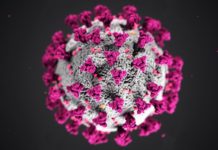Erin Pettit, a glaciologist stationed in Alaska, put her previous project on hold after discovering that fizz created by the release of pressurized air bubbles within glacier ice makes fjords surprisingly loud. Her original project involved seeing how humpback whales reacted to the sound of large ice hitting the water. The ice floating in the water is where Pettit opened her eyes to a significant discovery; the noise created from the glaciers is in comparison to a heavy storm.
Geophysical Research Papers published a paper with the help of Pettit and other researchers who hypothesized that harbor seals may use the incredible noise created by the glaciers in order to avoid enemies. Many underwater predators use sound to hunt, most notably the killer whale. Using the noise created by the fjords with tidewater glaciers, helps harbor seals avoid detection and increase survivability.
Researchers deployed underwater microphones into Icy Bay in 2009, also sampling sound at Yakutat Bay and at Andvord. The University of Washington’s Applied Physics Laboratory Jeff Nystuen used hydrophones underwater and discovered the amount of surprising sound picked up by the fjords. His awareness to the situation was much like that of Erin Pettit, and interest followed. Soon after their discovery, many researchers in the field starting running tests and sharing their data on the phenomenon. Most notable was The University of Texas at Austin running simulations using acoustic tanks with Alaskan glacier ice, breaking down the process to the last millisecond. More surprise ensued, as the bubbles, both rising through the water and hitting the surface, were of no consequence on the scale of sound.
The sounds and situations surrounding the length of the noise and who can hear it, prompted Pettit to liken the sound to that of a bubbling brook or busy highway. Many of the findings from Pettit and her colleagues contain valuable information that would be of use to marine biologists and associated fields. Certain animal behavior associated with sound, like that from harbor seals, can possibly be associated with an area’s sound. Other questions are raised in respect to how the habitat can change if the glaciers stop being of consequence, like with Muir Glacier located in Glacier Bay National Park. On even the smallest scale, a change like that could affect an entire ecosystem. Whether it would be a danger to certain species has yet to be proven.
The work that Erin Pettit has done, along with other researchers, will go a long way in determining animal behavior and possibly a way to prevent certain changes of cycle disasters from taking place. It just goes to show that even in Alaska, you can find a needle in a haystack.

















